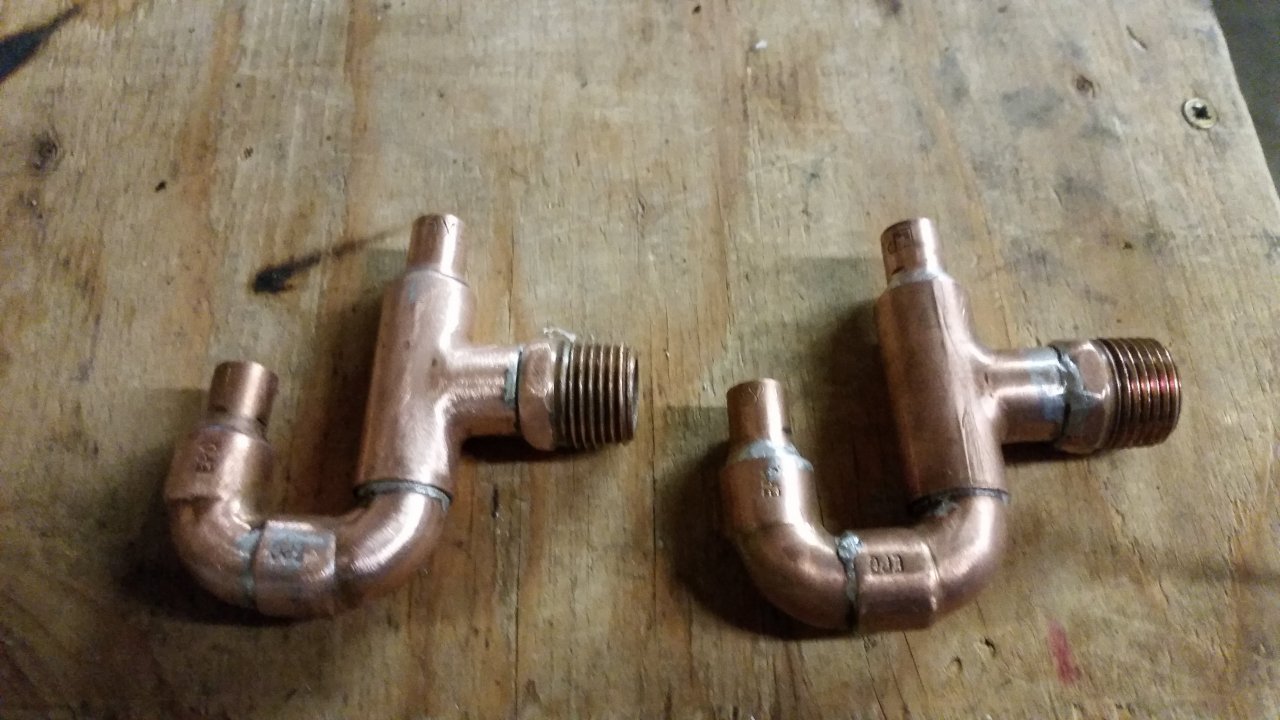outdrosman
Active Member
- Joined
- Sep 22, 2015
- Messages
- 29
- Reaction score
- 15
Hi everyone, I have been reading the forums for a while now and I have gotten a ton of great information so first of all I would like to thank everyone for all the help with a bunch of projects that have helped me make better beer. I am in the middle of building an automated gas powered HERMS rig but it might take a long time to finish the project so I am not going to post a full build until I finish it. However...
During the planning phase I came across Brewpi's new HERMS coil that runs three short lengths of tubing in parallel for greater throughput in the coil. https://store.brewpi.com/featured/3-way-parallel-high-flow-herms-coil The tests they ran showed that after 25 feet of coil the temperature of the wort in the coil had equalized with the temperature of the HLT. So having a coil longer than 25 feet doesn't help you. It seems that using larger diameter tubing may help but not much. The answer that they came up with was to split the input into three shorter (about 25 feet) coils to increase volume through the coil while keeping a good surface area to volume ratio between the wort and the coil.
This brings me to the two immersion chillers in my garage. I have been planning on converting them to a HERMS coil for a while. My whole system is 1/2". Both chillers are 3/8" copper tubing, that'll really throttle my pump if combine both 25' chillers into one 50' coil as I was planning on doing. My new idea is to make a manifold to run these babies in parallel so I don't have any restriction on my flow. My idea is that this will make a HERMS coil that can change the temperature of the whole mash more quickly than using a larger diameter coil or using a longer coil of the same diameter.
So far I have a 1/2" copper NPT thread soldered to a 1/2" T, I've attached an image of this. To each end of this T I hope to solder a reducer (if anyone actually makes it) to get down to my 3/8 inch copper from the chillers. I plan on having them oriented as a coil within a coil, I also attached an image of this.
To finish the project I need to find out if there is a reducer, otherwise I will have to use compression fittings to attach the coil to the T's. I also need to figure out how to attach the copper 1/2" NPT to the site of my kettle.
Alright everyone, now tell me why this won't work! Seriously I would really appreciate it if everyone would let me know if there are holes in my plans before I spend a bunch of money on this.
Thank you!
During the planning phase I came across Brewpi's new HERMS coil that runs three short lengths of tubing in parallel for greater throughput in the coil. https://store.brewpi.com/featured/3-way-parallel-high-flow-herms-coil The tests they ran showed that after 25 feet of coil the temperature of the wort in the coil had equalized with the temperature of the HLT. So having a coil longer than 25 feet doesn't help you. It seems that using larger diameter tubing may help but not much. The answer that they came up with was to split the input into three shorter (about 25 feet) coils to increase volume through the coil while keeping a good surface area to volume ratio between the wort and the coil.
This brings me to the two immersion chillers in my garage. I have been planning on converting them to a HERMS coil for a while. My whole system is 1/2". Both chillers are 3/8" copper tubing, that'll really throttle my pump if combine both 25' chillers into one 50' coil as I was planning on doing. My new idea is to make a manifold to run these babies in parallel so I don't have any restriction on my flow. My idea is that this will make a HERMS coil that can change the temperature of the whole mash more quickly than using a larger diameter coil or using a longer coil of the same diameter.
So far I have a 1/2" copper NPT thread soldered to a 1/2" T, I've attached an image of this. To each end of this T I hope to solder a reducer (if anyone actually makes it) to get down to my 3/8 inch copper from the chillers. I plan on having them oriented as a coil within a coil, I also attached an image of this.
To finish the project I need to find out if there is a reducer, otherwise I will have to use compression fittings to attach the coil to the T's. I also need to figure out how to attach the copper 1/2" NPT to the site of my kettle.
Alright everyone, now tell me why this won't work! Seriously I would really appreciate it if everyone would let me know if there are holes in my plans before I spend a bunch of money on this.
Thank you!
Last edited:




